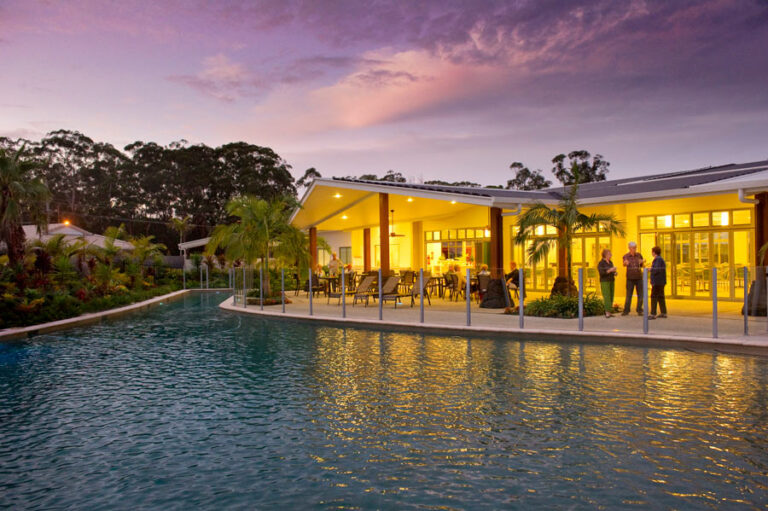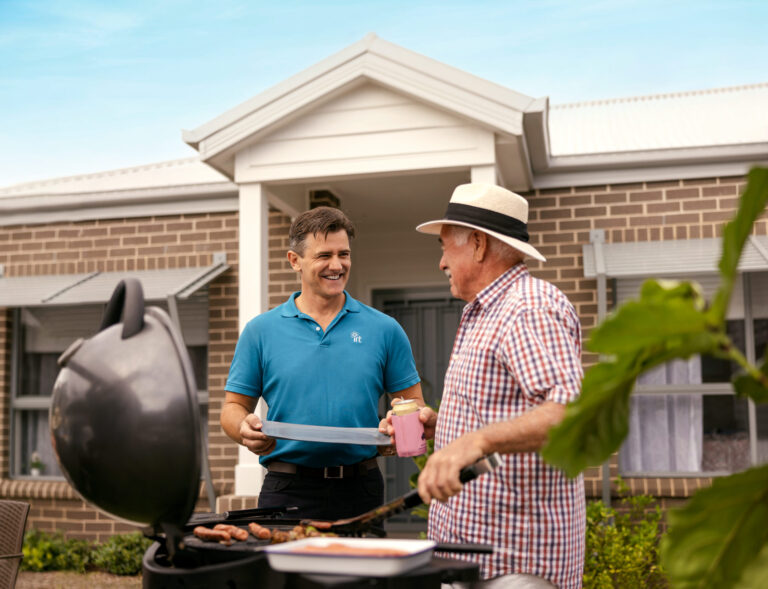Introduction to retirement villages
A retirement village is the perfect way to downsize your home and upsize your life.

Across Australia, almost 200,000 older Australians call a retirement village home.
Moving into a retirement village can be a great way to kick back and enjoy life in your later years but with so many different options out there it can be confusing to figure out the best way to go.
We’ve prepared this simple guide to help you understand the ins and outs of retirement village living.
What's a retirement village?
Across Australia, almost 200,000 older Australians call a retirement village home.
Moving into a retirement village can be a great way to kick back and enjoy life in your later years but with so many different options out there it can be confusing to figure out the best way to go.
We’ve prepared this simple guide to help you understand the ins and outs of retirement village living.
A retirement village is an age-appropriate housing development that offers a range of accommodation options, services and facilities for older Australians. You live independently in your own home while enjoying the benefits of community living.
Homes are specifically designed to make life easier and more enjoyable and site maintenance and landscaping are taken care of. What’s more, there are communal areas and you can usually access support such as home care services.
Retirement villages are not aged care centres or nursing homes.
What type of homes and facilities do retirement villages have?
The properties, usually referred to as independent living units (ILUs), come in many shapes and sizes, including villas, high or medium-rise apartments, serviced apartments and terrace houses.
Services and facilities vary too, and can range from golf courses, swimming pools, gyms and theatres to organised social events and 24-hour emergency assistance.
Retirement villages are ideal if you require little or no assistance with daily activities, but want to enjoy the benefits of living in a community with other older Australians.
ILUs are usually cheaper than similar-sized homes in the same area, although there are other costs associated with living in a retirement village.
How old do I have to be to live in a retirement village?
As long as you’re 55 or over, you can join a retirement village! Despite the name, you don’t need to be retired to live in a retirement village. In fact, many of our residents are still working.
What are the costs involved?
There are many ways to pay for your new home and the costs will depend on which village you choose and where it’s located.
Remember, don’t sign any contract before getting independent legal and financial advice. It’s essential you get a really good understanding of the different payment options and any ongoing fees, which must be specified in the contract.
You’ll need to consider deposits, the different types of tenure arrangements, any type of management fee and what happens when you vacate.
For a good overview of the costs associated with retirement village living, check out our which explains a number of pricing options you can choose from.
Are there security measures in place for the residents?
Most retirement villages in Australia have some level of security in place for residents.
Generally you'll find that villages have CCTV, secure access control to buildings and apartments and overnight security patrols.
It’s best to ask your village sales consultant about the specific security measures in place at the village you’re considering as your new home.
Are pets allowed?
Many retirement villages allow you to have small pets, but they usually need to be approved before you move in. What’s allowed varies from village to village, and in some cases pets aren’t allowed at all, so it’s always best to check with the specific village you’re considering before moving in.
What is the Retirement Villages Act?
Each state has its own Retirement Villages legislation, which is designed to protect your rights.
It is very important for you to understand your rights and the Retirement Villages legislation outlines the obligations that residents and operators owe to each other.
If you would like a copy of the Retirement Villages legislation that will apply to you, please contact the appropriate legislative body in your state or give us a call on 134 478.
Who runs retirement villages?
Retirement villages are owned and operated by private operators as well as not for profit and community organisations such as churches and charities.
What happens if my needs change?
If your needs change, you can choose to receive additional support through home care services, whether it’s a hand around the house with cooking and cleaning or help with transport and getting out and about.
Unlike most family homes, many villas and apartments at retirement villages feature age friendly design. This means there’s plenty of room for mobility aids, and easy-grip door knobs and taps.
If either you or your loved one ends up needing 24/7 support, some retirement villages are co-located with an aged care centre where you can receive ongoing professional care.
If the time comes for that level of care you'll need to contact My Aged Care and get an aged care assessment. Find out about that process below.
At IRT we want to make your aged care journey as easy and stress-free as possible, so we’ve put together a step-by-step guide to the ACAT process.

Benefits of a retirement village
Retirement villages are purpose-built for older people, so they offer many advantages. Here are just a few:
Convenience
Retirement living offer low maintenance living, meaning residents have fewer home and garden chores to deal with, and common areas are looked after by the operator. This frees up time to spend with family and friends and makes it easy to go on holidays.
Social connection
Retirement villages provide lots of opportunities for residents to interact and connect, through shared recreational facilities, community rooms and organised social activities. Many residents report that the social aspect of living in a retirement village is the main reason they are happy with their new living arrangements.
Safety
Feeling safe and secure in your home is really important. Retirement villages have real benefits on this front, both in terms of your health and your physical security. Many offer quick and easy access to help in an emergency, including 24-hour health monitoring. In terms of physical security, you can have peace of mind knowing your neighbours are close by. Many villages are protected by security gates or, at night, security guards.
Independence
There is some evidence that retirement village residents remain independent longer than their counterparts who stay in their own homes. According to a 2014 Property Council of Australia report, retirement village residents typically move into an aged care facility later than people who enter straight from a family home. The research suggests living in age-appropriate facilities with additional health and wellbeing services contributes to this longer independence.
Discover the benefits of living in a retirement village

Choosing a retirement village
Selling your home and moving to a retirement village is a big financial and emotional decision so it’s essential you choose wisely.
As you move into the next phase of your life, the most important thing to consider is whether the retirement village will suit your lifestyle now and as your needs change into the future.
We all have different needs and wants so it helps to make a list of the things that matter to you before seeking out a village that will make you happy. Here’s a few thoughts to guide you:
- What type of village will suit your lifestyle. Do you like open space living or apartment city living?
- What community facilities (e.g. Tennis court, cafe, swimming pool, gym, golf course) will support your lifestyle?
- What kind of social activities do you enjoy? (e.g. movie nights, sports clubs, wine groups)?
- Is the village pet-friendly?
- What services does the village offer to support my health, wellbeing and security?
- If my health needs change, is the village co-located with a residential aged care centre that would make it easier for me to access a high level of care?
What are the costs involved?
There are many ways to pay for your new home and the costs will depend on which village you choose and where it’s located.
Remember, don’t sign any contract before getting independent legal and financial advice. It’s essential you get a really good understanding of the different payment options and any ongoing fees, which must be specified in the contract.
You’ll need to consider deposits, the different types of tenure arrangements, any ongoing fees and what happens when you vacate.
For a good overview of the costs associated with retirement village living, check out our pricing and rates page which explains a number of pricing options you can choose from.

Retirement living at IRT
If you’re interested in downsizing your house and upsizing your life, IRT has more than 30 retirement villages across NSW, Qld and ACT. Find out more about the possibilities of village life and how one of our independent living communities can suit you and your unique needs.
Find out moreYou may also like
Here's what happens if you neglect your physical health
Staying fit during these times can be hard but we've got plenty of simple tips to help keep you active.
7 common retirement living myths
There are quite a few misconceptions floating about when it comes to retirement villages, so let’s debunk some of the common myths.

